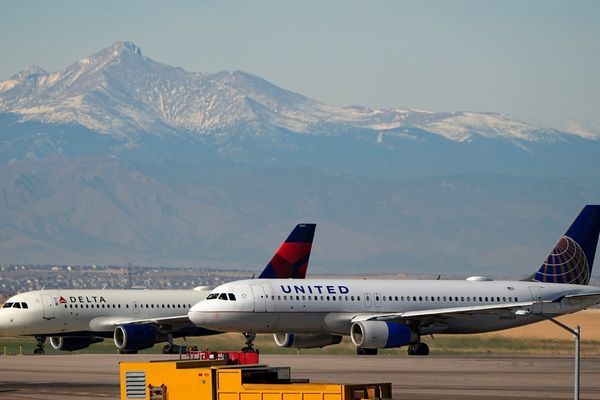Work to remove the soft fall surface material at a popular Bargara playground, east of Bundaberg, has renewed concerns about the safety of the recycled rubber material used nationwide.
Rubber surfaces have been used in modern children's playgrounds as an effective and sustainable means of diverting old tyres from landfill.
But environmental groups say the plan has backfired spectacularly.
Tangaroa Blue Foundation chief executive Heidi Tait said she was concerned that "crumbs" of the rubber material posed a risk to people's health and the environment as the material aged and disintegrated.
"We identified that rubber crumb from these soft fall playgrounds is escaping as the play area degrades and those little crumbs escape out," she said.
"When it rains, it washes into creeks and stormwater systems and then out into the reef.
"We're really concerned because there's a lot of interest in this issue internationally around the toxins and the chemicals that are in these rubber crumbs."
University of Queensland research fellow Cassandra Rauert said the tyre materials contained a variety of potentially hazardous chemicals.
"The problem is when these small tyre pieces get into the waterways, all these chemicals are released into the water," she said.
"About two years ago, it was discovered that one of the antioxidants that are commonly used in tyres are being transformed into an acutely toxic chemical that's killing a lot of salmon over in the Unites States."
She said that raised concerns about the effects of tyres in Australian waterways.
"So if you've got playgrounds that are close to catchments that go into the Great Barrier Reef, we're washing all these chemicals into the Great Barrier Reef which is really of concern," she said.
'We are being exposed'
Researcher Cassandra Rauert said she was also concerned about the effect the rubber crumbs could have on people.
"We still have no idea about the human effects of either breathing in these small tyre particles and chemicals," she said.
"There's been a recent study which shows that these chemicals are in human urine, which means that we are being exposed, so we're probably breathing in tiny particles and then these chemicals are getting into our bodies.
She said more research was needed.
Ms Tait said she was particularly concerned about children inhaling the small rubber particles.
"It just seems that this product is being laid out left, right and centre in your play areas around Australia and we have not seen one park that hasn't seen this kind of degradation," she said.
"When you've got kids playing on it and inhaling, you know, the dust or the small crumb particles as they come up, or they press their hands on it and lick their hand, it's concerning."
"We just don't know what is in it or what that transfer is like."
Momentum building
Australian government funded project ReefClean found in 2021 that rubber material was lost from all of the playgrounds studied and recommended that the use of soft fall material be avoided near sensitive environments and waterways.
Ms Tait said it was encouraging to see councils taking action on the issue.
"We actually had the Cassowary Coast Council, who actually had one of their parks assessed, pull up all that rubber crumb and start to remove that in their council area," she said.
"They also made a commitment not to use that product anymore.
"So we're excited to see momentum building and now we have a second council that is just looking at the surface and saying it's not fit for purpose and they're removing it."
In a statement, Bundaberg Regional Council said a new matting system would be trialled at the Bargara Turtle Playground to mitigate microplastic pollution from soft fall "rubber crumbs" as the council worked towards a permanent solution.
"New research has shown the tendency for this product to disintegrate over time, leading to what is termed rubber crumb which can end up in the ocean," it said.
"The matting system will be installed over the top of most of the existing soft fall at the Turtle Playground from next week and will considerably reduce the amount of potential rubber crumb.
"We will continue to investigate alternative solutions to protect our marine environment and our community members and visitors who use our playgrounds."







